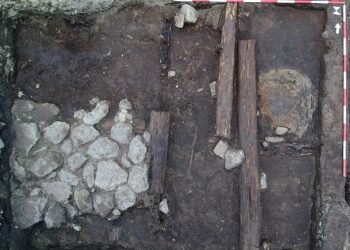A new discovery at the Panoría megalithic necropolis in Granada, Spain, has revealed a striking gender imbalance in ancient burials, suggesting that the region may have had a female-centered social structure.

A multidisciplinary research team, led by the Archaeometry group from the University of Tübingen and the GEA group from the University of Granada, unearthed a significant finding: twice as many women were buried as men. This imbalance is particularly stark among juveniles, where the ratio is a remarkable 10 females for every male.
The Panoría necropolis, located in Darro at the easternmost end of Sierra Harana, consists of at least 19 graves, nine of which were excavated between 2015 and 2019. These collective burial sites have yielded over 55,000 skeletal remains. Radiocarbon dating suggests the first burials took place around 5600 years ago, with the site being used intermittently until about 4100 years ago.
What makes this discovery particularly noteworthy is the use of advanced bioarchaeological methods, which allowed researchers to accurately determine the chromosomal sex of the individuals buried in these graves. This was done through the analysis of DNA and a protein known as amelogenin, found in tooth enamel, which provides reliable sex identification. In this study, published in Scientific Reports, scientists were able to create the first precise demographic profile of the biological sex of the people buried at the site.

The results uncovered a clear bias in favor of female burials, a deviation from the typical human population ratio of approximately 1:1. As Professor María Dolores Fernández of the University of Granada explained to LBV Magazine, “The Panoría population shows a clear sex ratio imbalance in favor of females, with twice as many females as males.” The skew was consistent across all age groups and persisted throughout the site’s millennia of use, leading researchers to rule out short-term or isolated events like conflicts, wars, or migration as possible causes.
Instead, the researchers suggest that this gender bias may reflect long-standing social practices rooted in a matrilineal society. In such societies, family lineage and social belonging are determined through the maternal line. This could explain the dominance of female burials at the site and the relative absence of young males, who may have left to join other kin groups—a practice known as male exogamy. The consistency of this bias across time and grave sites indicates that it was a deliberate social choice, rather than the result of random or extraordinary events.

The findings point to the possibility that Panoría was home to a female-centered social structure, where gender played a significant role in shaping funerary customs and cultural traditions.
This discovery suggests that women may have held a central place both in life and in death. While the exact reasons for this bias remain unclear, the evidence points toward deeply ingrained cultural practices that prioritized women in the community’s funerary rituals.























